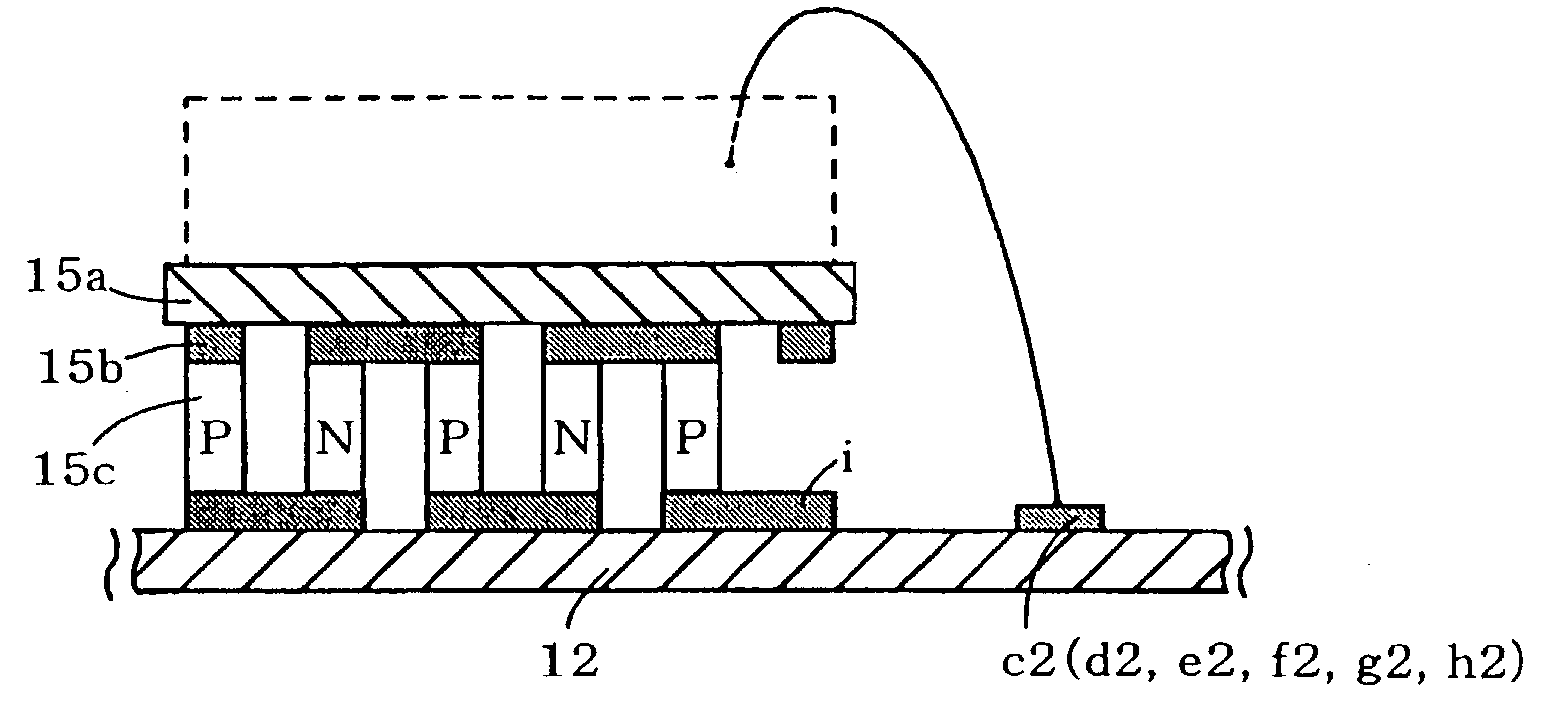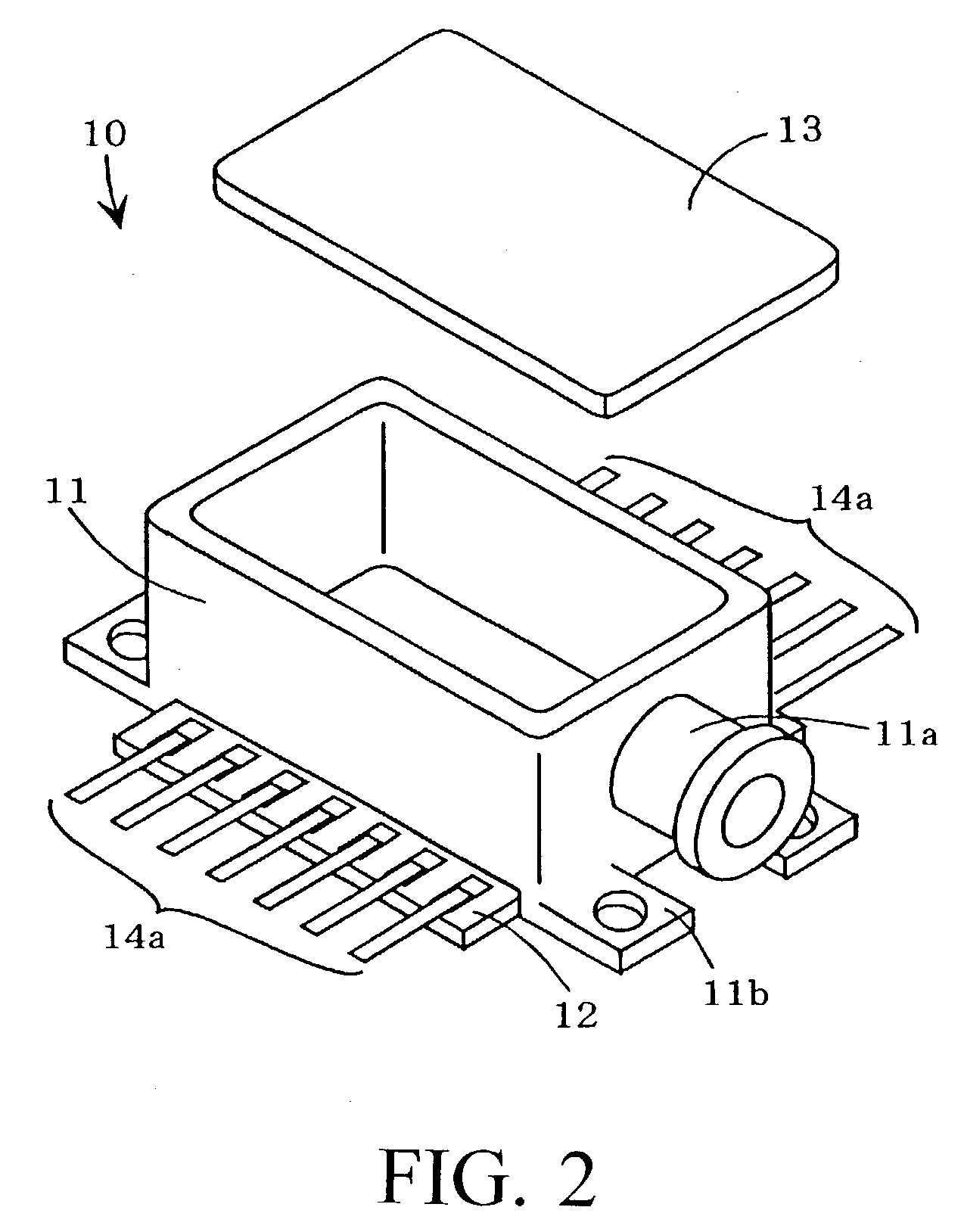Thermoelectric module package
a technology of thermoelectric modules and modules, applied in the field of semiconductor lasers, lasers, heat exchange devices, etc., can solve the problems of increasing the overall manufacturing cost, increasing the manufacturing cost of packages, and reducing the yield of manufactur
- Summary
- Abstract
- Description
- Claims
- Application Information
AI Technical Summary
Benefits of technology
Problems solved by technology
Method used
Image
Examples
first embodiment
[0082] The first embodiment can be modified in various ways, examples of which will be described below.
first modification
(a) First Modification
[0083] In the first embodiment described above, the external electrode patterns a1-h1 are formed on the surface of the base member 12 and are connected with the leads 14a respectively. Herein, it is possible to form external circuit electrodes on the backside or side surface of the base member 12.
[0084] In this case, internal electrode patterns a2-h2, a thermoelectric module metallizing portion i, and a frame member metallizing portion j are formed on the surface of the base member 12 as shown in FIG. 5A, while external electrode patterns a1-h1 are formed on the backside of the base member 12 as shown in FIG. 5B. Thus, it is possible to produce a modified example of the base member 12 constituted by a multilayer substrate.
[0085] The aforementioned example eliminates the necessity of arranging the external electrode patterns a1-h1 on the surface of the base member 12, which can be therefore reduced in size in a planar shape. In addition, it becomes unnecessary t...
second modification
(b) Second Modification
[0086] The first embodiment produces a "semi-finished" product of the thermoelectric module 15 (see FIG. 7A) in which the Peltier elements 15c join the upper substrate 15a via the electrode patterns 15b. For this reason, the thermoelectric module metallizing portion i is formed on the surface of the base member 12 in such a way that the Peltier elements 15c are arranged by alternately changing polarities thereof between p-type and n-type and are electrically connected in series.
[0087] It is possible to modify the first embodiment as shown in FIG. 7B, wherein the thermoelectric module 15 is constituted by a pair of an upper substrate 15a and a lower substrate 15e sandwiching numerous Peltier elements 15c therebetween in such a way that the Peltier elements 15c joining the upper substrate 15a via the electrode patterns 15b are arranged by alternately changing polarities thereof between p-type and n-type and are electrically connected in series while electrode pa...
PUM
 Login to View More
Login to View More Abstract
Description
Claims
Application Information
 Login to View More
Login to View More - R&D
- Intellectual Property
- Life Sciences
- Materials
- Tech Scout
- Unparalleled Data Quality
- Higher Quality Content
- 60% Fewer Hallucinations
Browse by: Latest US Patents, China's latest patents, Technical Efficacy Thesaurus, Application Domain, Technology Topic, Popular Technical Reports.
© 2025 PatSnap. All rights reserved.Legal|Privacy policy|Modern Slavery Act Transparency Statement|Sitemap|About US| Contact US: help@patsnap.com



